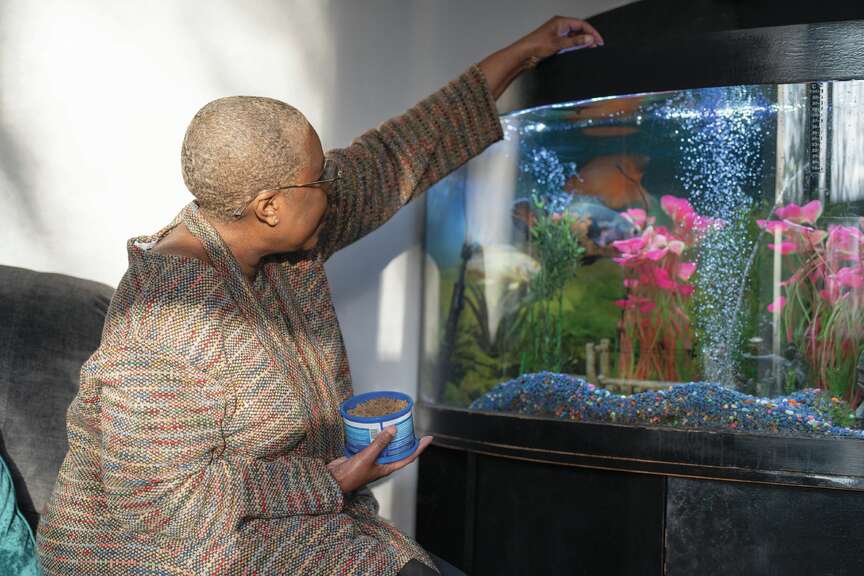Summer can promise great fun for pets and their humans alike. Keeping it fun means following certain precautions to protect your pet against higher temperatures and other hazards.
Just like humans, pets need plenty of fresh water, especially when it's hot outside. Ensure your pets always have access to clean water, both indoors and outdoors. Consider adding ice cubes to their water bowl to keep it cool throughout the day.
One of the most critical summer safety tips is to never leave your pet inside a parked car, even for a short time. Cars can quickly become like ovens in the summer heat, leading to heatstroke and even death in a matter of minutes. If you need to run errands, leave your pets at home where they're safe and comfortable.
When pets are outdoors, provide them access to shaded areas where they can rest and cool off. Whether it's a tree, a canopy or a covered porch, shade is essential for preventing overheating. If your pet spends time in a backyard, ensure there's a shelter or a doghouse where they can retreat from the sun.
Schedule outdoor activities such as walks or playtime during the cooler parts of the day, such as early morning or late evening. Avoid strenuous exercise during the hottest hours to prevent heat exhaustion or burns on your pet's paws from hot pavement.
If you're taking your pet swimming or near water, always supervise them closely. Not all pets are natural swimmers, so introduce them to water gradually and provide them with flotation devices if needed. Rinse off chlorine or saltwater after swimming to avoid skin irritation.
Summer brings out insects like fleas, ticks and mosquitoes, which can transmit diseases and cause discomfort to pets. Use vet-approved flea and tick preventatives and consider insect repellents formulated specifically for pets. Check your pet regularly for any signs of pests and remove them promptly.
While summer gatherings are fun, certain foods like onions, grapes, chocolate and alcohol can be toxic to pets. Keep human food and beverages out of reach, and remind guests not to feed your pets anything unfamiliar. Also, be mindful of hot grills and sharp BBQ utensils that can pose hazards.
Recognize the signs of heatstroke in pets, which include excessive panting, drooling, rapid heartbeat, weakness, vomiting and collapse. If you suspect heatstroke, move your pet to a cool area, offer water to drink, and seek immediate veterinary attention.
Following these summer safety tips can help your pets enjoy the season while keeping them healthy and safe from common summer hazards.
Spotting Signs of Illness in Fish
Keeping fish as pets can be a rewarding and enjoyable experience. However, like any living creature, fish can fall ill.
Recognizing the signs of illness early on contributes to the health and well-being of your aquatic companions.
Common Symptoms
Pay attention to any sudden changes in your fish's behavior. This could include lethargy, loss of appetite, hiding or unusual swimming patterns. Changes in behavior can indicate underlying stress or health issues. The American Veterinary Medical Association warns that fish might start swimming upside down or appear disoriented.
Inspect your fish regularly for physical signs of illness. Look for abnormalities such as lesions, growths, discoloration, fin rot, cloudy eyes or excessive mucus on the body or gills. These symptoms can be indicative of infections or parasitic infestations.
Watch for signs of respiratory distress in your fish, such as rapid breathing, gasping at the water's surface, or spending excessive time near air stones or filters. Respiratory problems can be caused by poor water quality, infections or gill parasites.
If your fish is swimming erratically, tilting to one side or struggling to maintain balance, it could be a sign of swim bladder disorder or other internal issues. Swim bladder problems can affect buoyancy and normal swimming behavior.
A loss of color or vibrancy in your fish, along with a decreased appetite, can indicate stress, nutritional deficiencies or systemic health problems. Healthy fish should have vibrant colors and a healthy appetite.
Caring for a Sick Fish
If you suspect that one of your fish is ill, consider isolating it in a quarantine tank. This can help prevent the spread of disease to other fish in the main aquarium.
Test the water parameters in your aquarium, including temperature, pH, ammonia, nitrite and nitrate levels. Poor water quality can stress fish and make them more susceptible to illness. Perform partial water changes as needed to maintain water quality.
If you're unsure about the cause of your fish's illness or if the symptoms persist, seek advice from a veterinarian who specializes in aquatic animals or consult with knowledgeable staff at a reputable aquarium store. They can guide diagnosis and treatment options.
Based on the diagnosis, follow any treatment recommendations provided by a veterinarian or experienced aquarist. Treatments may include medications, changes in water parameters or adjustments to diet and feeding habits.
Keep a close eye on your fish during treatment. Monitor their behavior, appetite and physical appearance for improvements or worsening symptoms. Adjust treatment protocols as necessary based on observations.

